N.N.
The Play Pictorial No. 379 / Vol. LXIII
1933
Paul Abraham’s Ball im Savoy opened at Berlin’s Großes Schauspielhaus in December 1932 with a superstar cast – and was gone shortly after the Nazis came to power in January 1933. Two of the principal cast members, Rosy Barsony and Oscar Denes, took the show to London’s West End in 1933 where Oscar Hammerstein produced, translated and adapted the libretto for a lavish Drury Lane staging. We read in Kurt Gänzl’s The British Musical Theatre Vol. II that it didn’t do well there and “closed after little more than four months.” But there are numerous recordings made by the London cast of almost all the songs that document the musical glories of that production. There are also various dance band versions and orchestral selections conducted by Charles Prentice and the Drury Lane Theater orchestra. Strangely, these 20+ recordings have never been released on CD. In addition, the magazine The Play Pictorial devoted an issue to Ball at the Savoy which gives an English summery and explains what the show is all about. We reprint this article by an anonymous author here with photos from The Play Pictorial.

Natalie Hall as the Marquise de Faublas in London’s “Ball at the Savoy” production, on the cover the “The Play Pictorial,” 1933. (Photo: Thomas Krebs Archive)
It is a far distant day since Alexandre Dumas fils wrote “Francillon,” and it is doubtful if even he actually originated the story, but it has had its attractions for succeeding dramatics, and our own Henry Arthur Jones gave us his version of it in “The Case of Rebellious Susan.” One can sum up the story in the old law, “what’s good for the goose is good for the gander.” If a husband frivols with the demi-mondaine why should not the wife frivol with any gay Lothario that comes her way? If the married lady knows that her husband has made arrangements to share a cabinet particuliare at the Fancy Dress Ball, why should not she so arrange it that she engages the adjoining room, with the first presentable young man she meets at the Ball.
And to strike the nail full on the head must she not let it be known that she has put herself in that compromising situation.
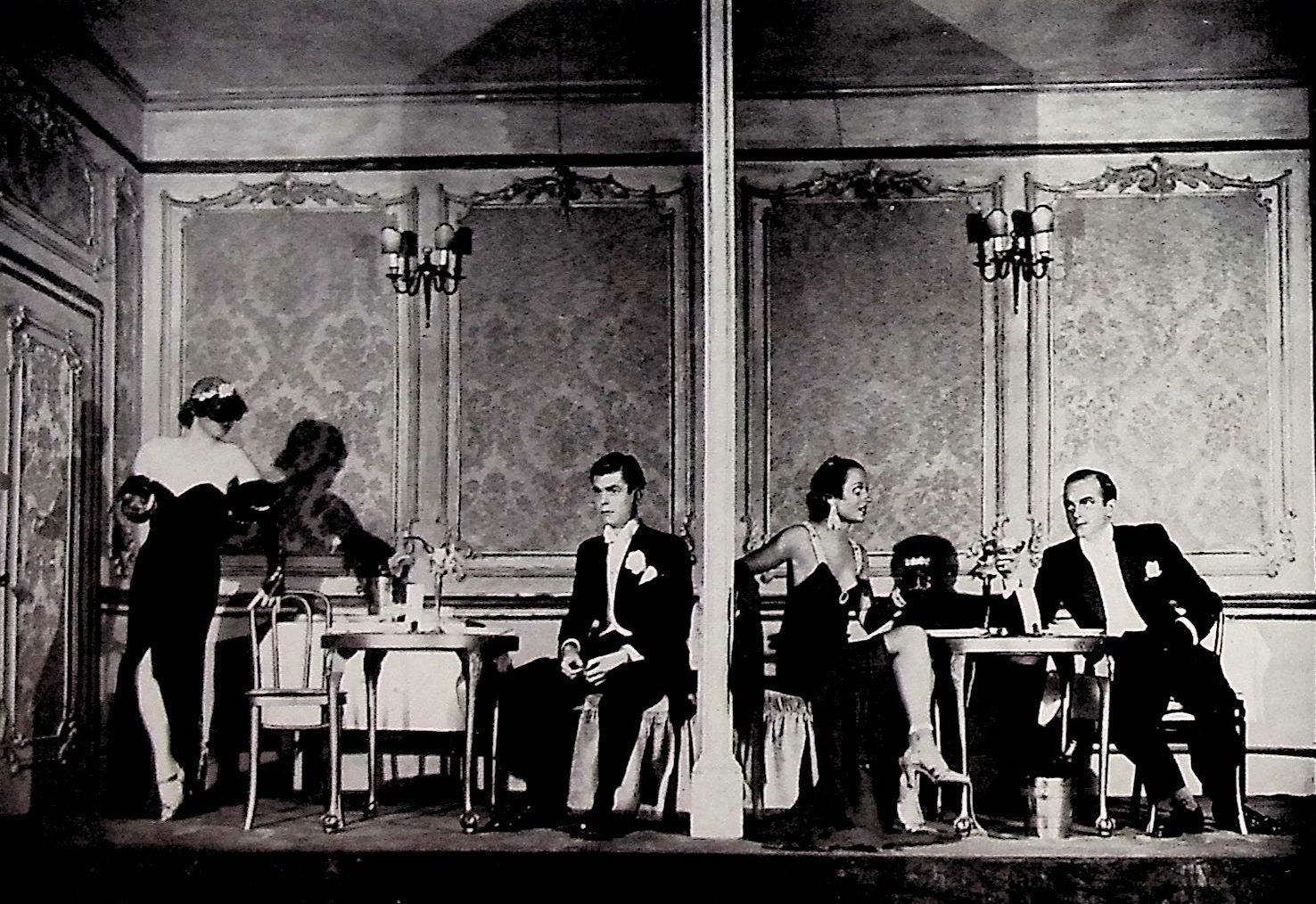
The “cabinet particuliare” scene in act 2 of “Ball at the Savoy” in the London production, 1933. (Photo: Thomas Krebs Archive)
Messrs. Grunwald and Lohner-Beda choose a public announcement at the Ball itself, which is the better method for a big musical “show,” such as “Ball im Savoy,” as it makes a strikingly dramatic effect amid the crowded ballroom, where one needs huge and expansive effects in proportion to the packed company on the stage.
At Drury Lane the wife’s public confession and accusation thrill those around her, as it thrills those on the other side of the footlights. That, however, is not the whole story of “Ball at the Savoy,” but to be explanatory on this point would be bewilderingly prolix and as baffling as the Maze at Hampton Court.
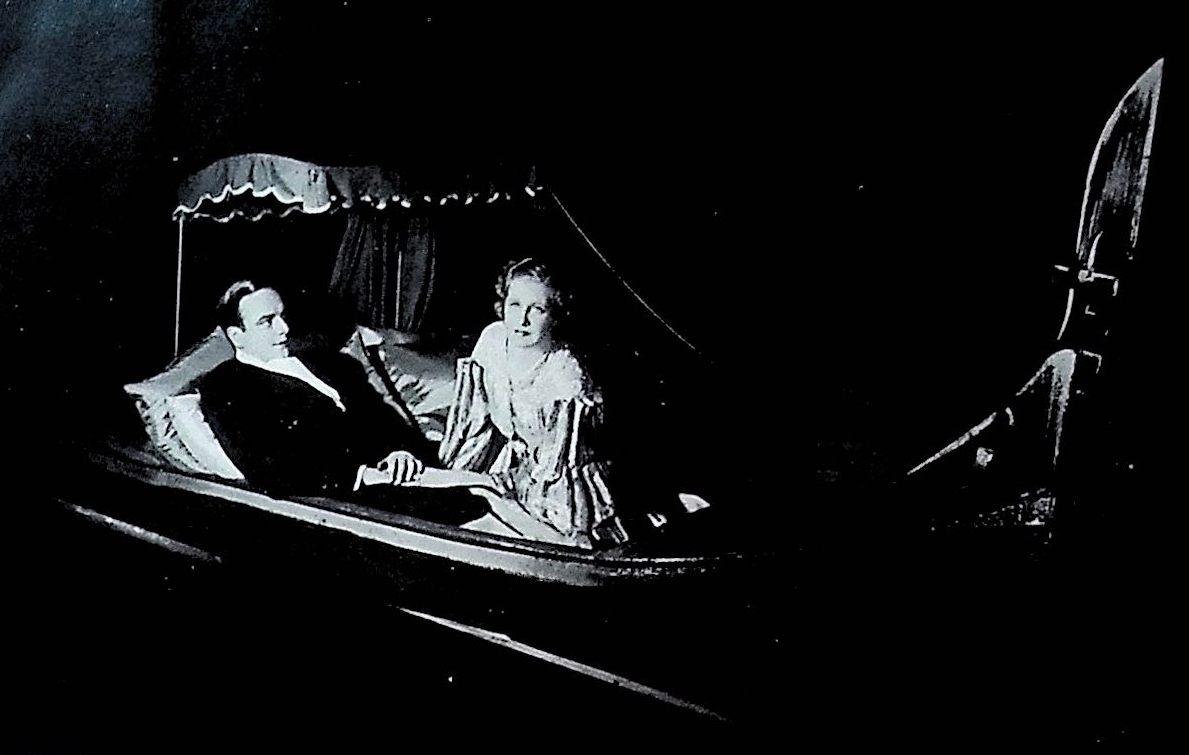
The gondola scene in “Ball at the Savoy” in London, 1933. (Photo: Thomas Krebs Archive)
The action of the “book” begins with a delightful gondola scene in which the Marquis de Faublas and Madame la Marquise are cooing softly to each other with the atmosphere etheralised by the silvery beams of a Venetian moon. Love is life and to these two, lapped by the soft waters of the Adriatic Lagoon, life is love.
Such dreams of la lune de miel have been recorded by poets since the days of the first Romanticist, whoever he was, and the old, old story will go on repeating itself till the world’s people are whirledoff the globe into space illimitable.
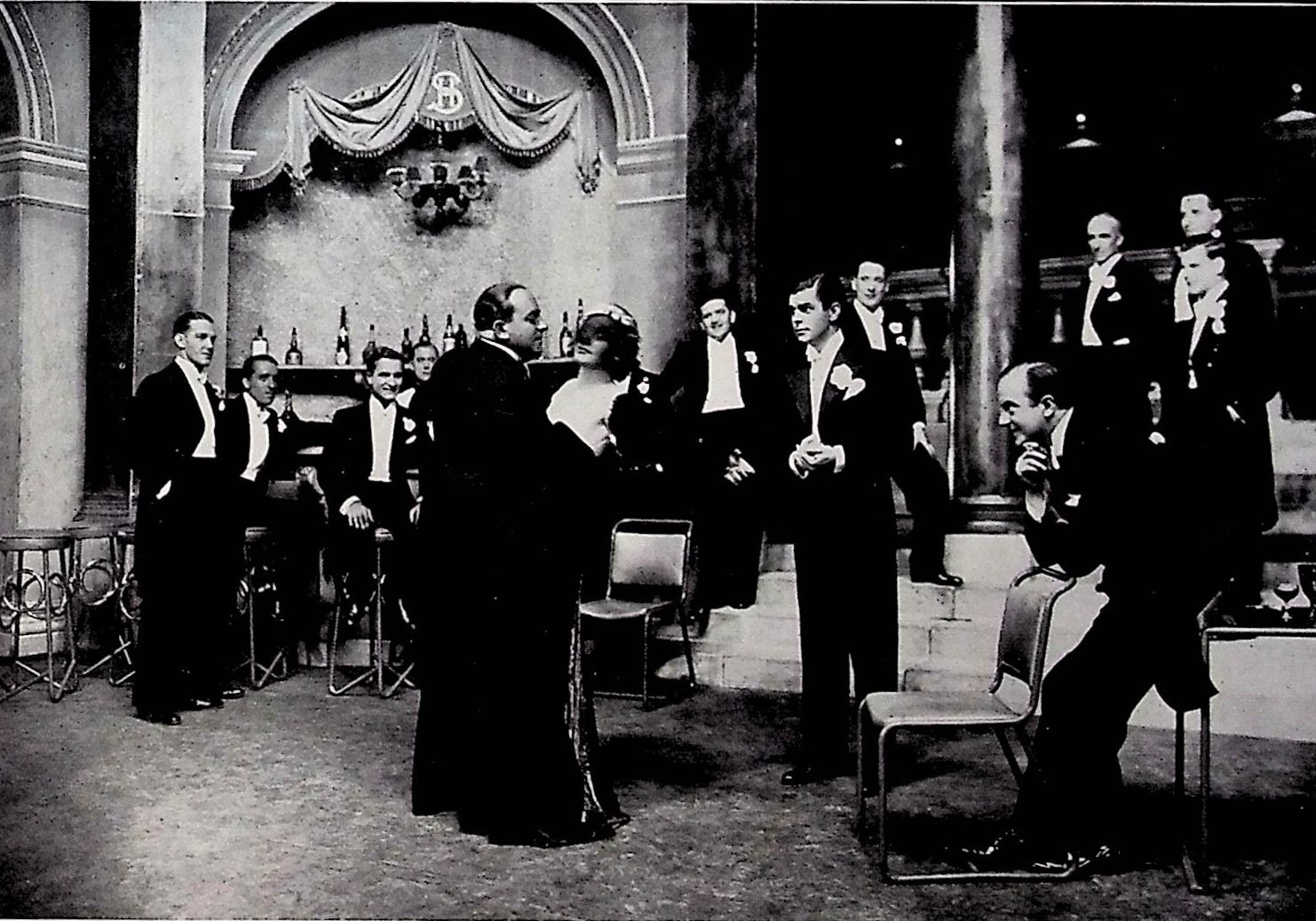
The Marquise de Faublas at the Ball, with Mustapha Bei and other gentlemen. (Photo: Thomas Krebs Archive)
For some reason or another, best known to himself, the Marquis makes an appointment with an “old flame,” and the Marquise gets wind of the assignation. Hence the trouble. She will go to the Ball in search of adventure, and there she meets an unassuming young lawyer, who is filled with delight immeasurable at the prospect of having an affaire with une femme of the grande monde.

The Marquise de Faublas and Celestin, her “man for the night.” (Photo: Thomas Krebs Archive)
He recognises that the fair unknown, beneath her mask, has the lineaments of a scion of Aristocracy, and that he, clothed in a hired dress suit, must bear in patience the strange whims and fancies of a distinguished Dulcinea. So much for the story of the Marquis and Marquise de Faublas.
And now for the story of Kathi Mihazy, own cousin to the Marquise, and Mustapha Bei, Attache at the Turkish Embassy.
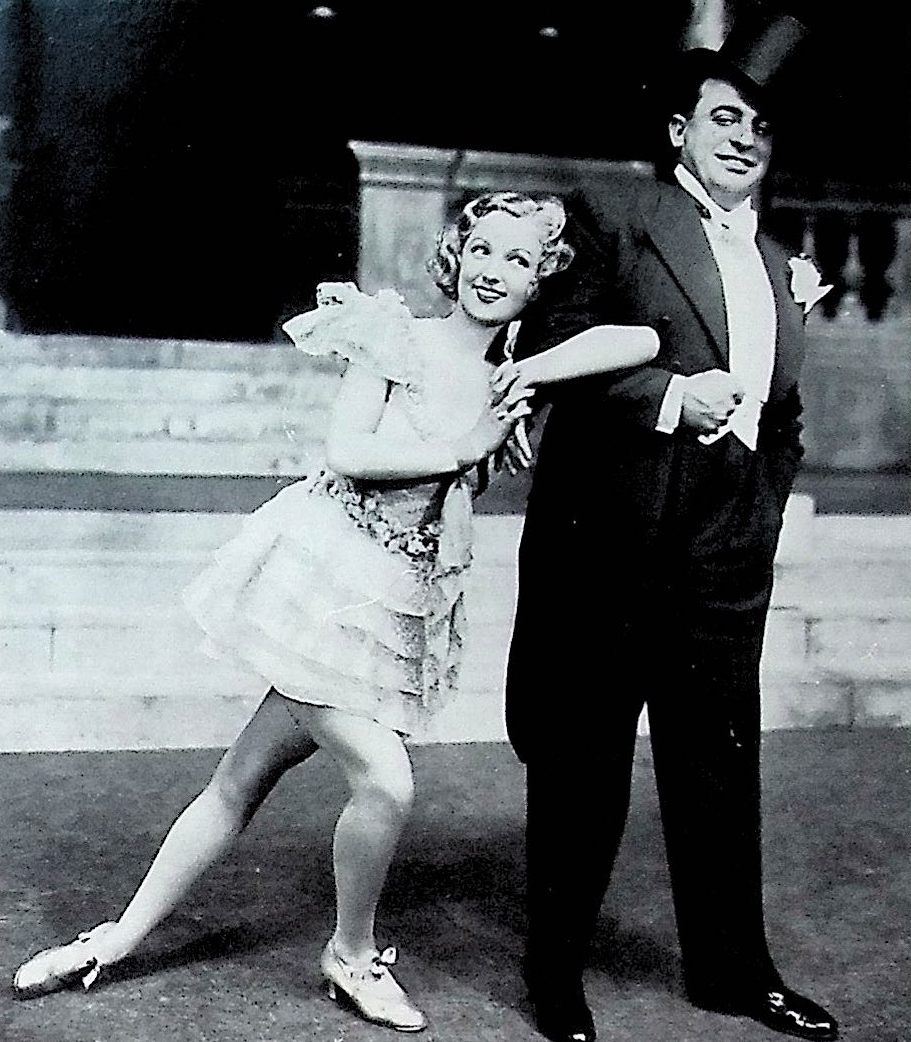
Rosy Barsony and Oscar Denes in “Ball at the Savoy” at Drury Lane, 1933. (Photo: Thomas Krebs Archive)
Kathi has a dainty blonde as her representative, Rosy Barsony, and Mustapha is impersonated by Oskar Denes, neither of whom own allegiance to good King George. But they have a titular deity of merriment, fun, devilment and irrepressible jollity.
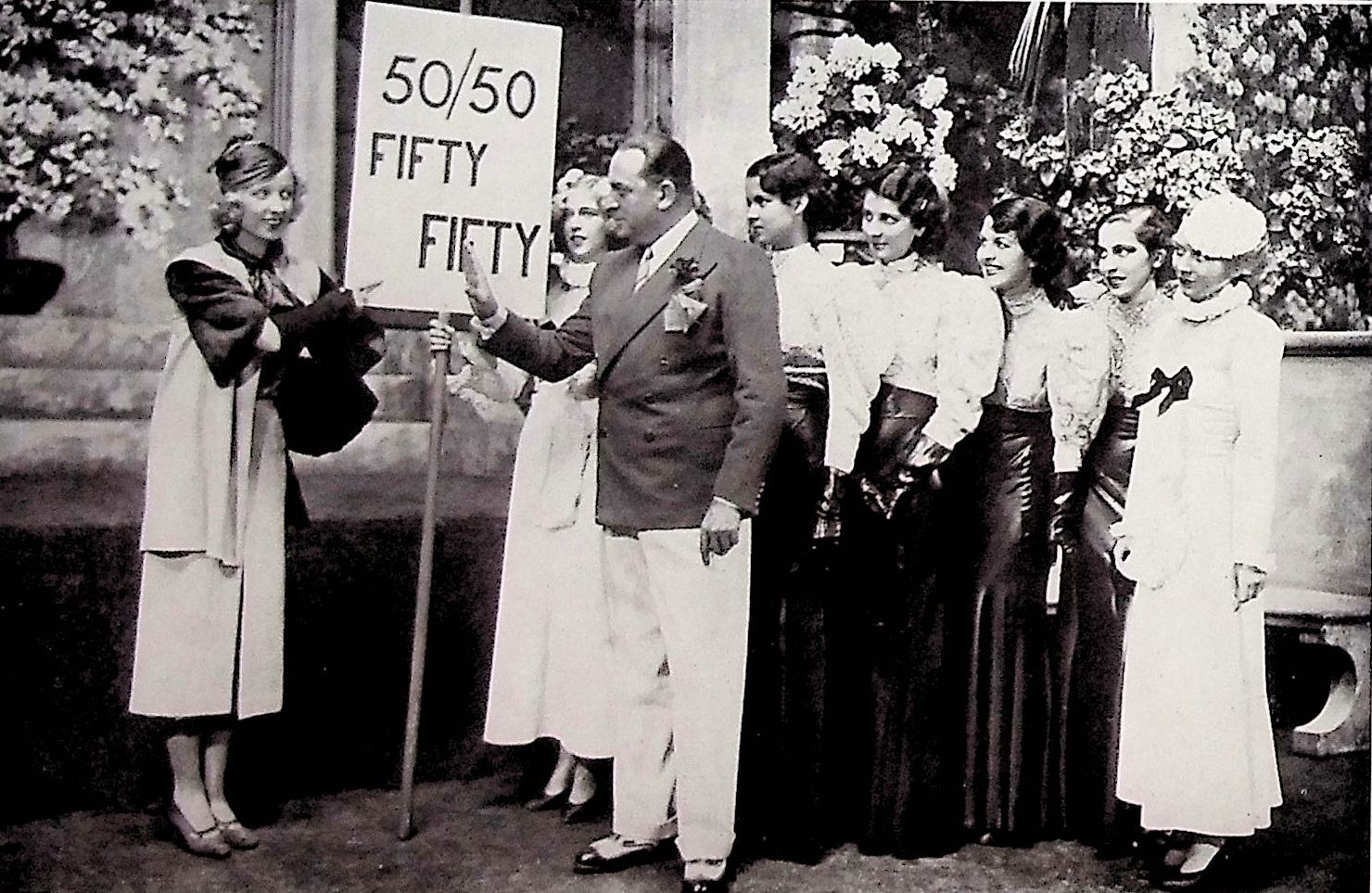
Kathi Mihazy demands equal rights for women from Mustapha Bei, too. (Photo: Thomas Krebs Archive)
They are as animated as quicksilver, as agile as dancers at a moonlight assembly of elfs and fairies. They are here, there, and everywhere, laughing at and with themselves, and sending the audience into fits of hilarity with song and dance, including the galvanising ditty, “Oh why, Oh Why, Oh Why”” so rapturously encored that the duettists almost burst their bodily tyres in their efforts to comply with the demands of the applauding audience.
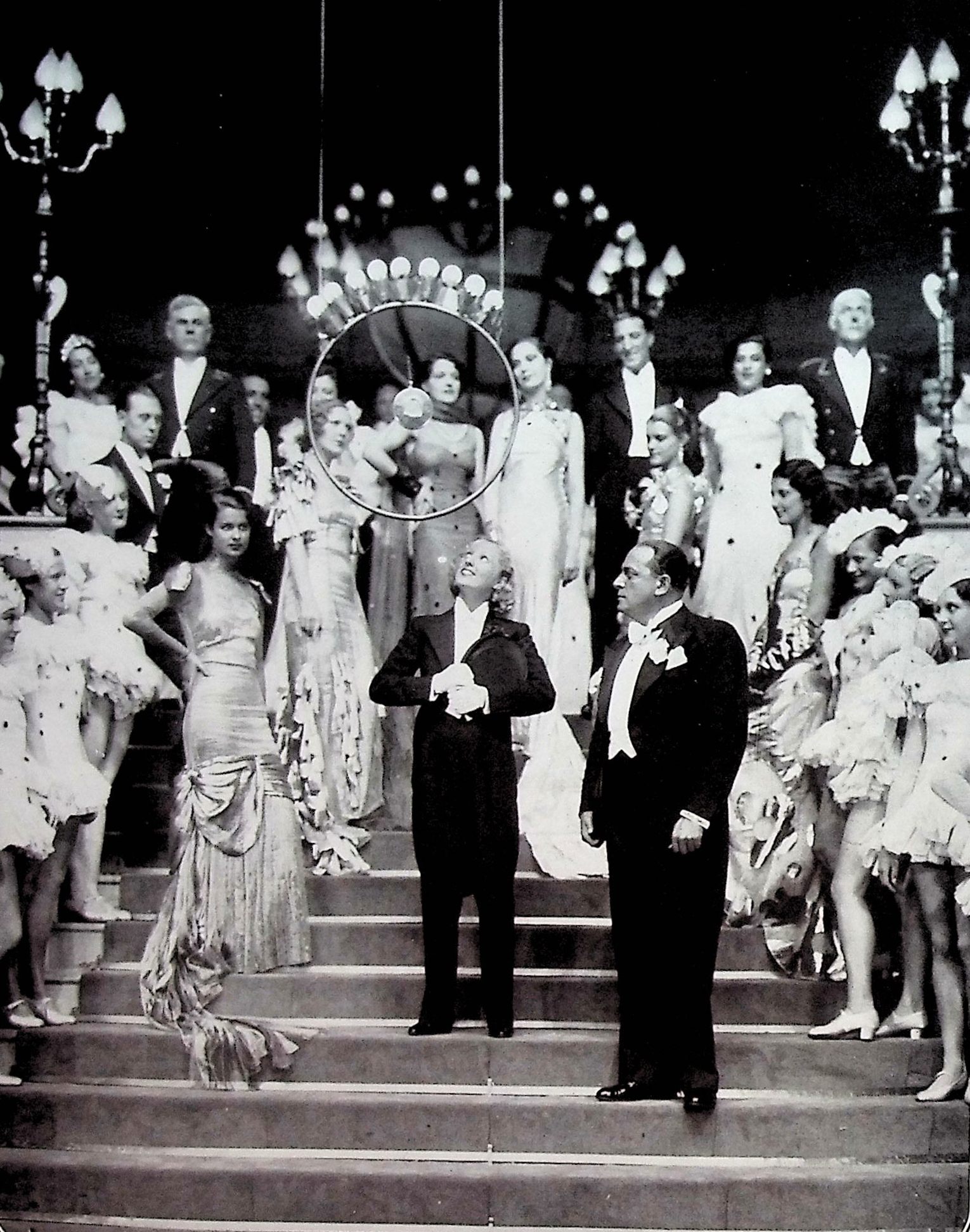
The climax of act 2 in “Ball at the Savoy” in London, 1933. (Photo: Thomas Krebs Archive)
There remain now for description the décor, the dresses, the dancers, the tout ensemble, the panoply of a Drury Lane production, which, for at least fifty years, has ever formed a topic of conversation, and eulogy in the Press.
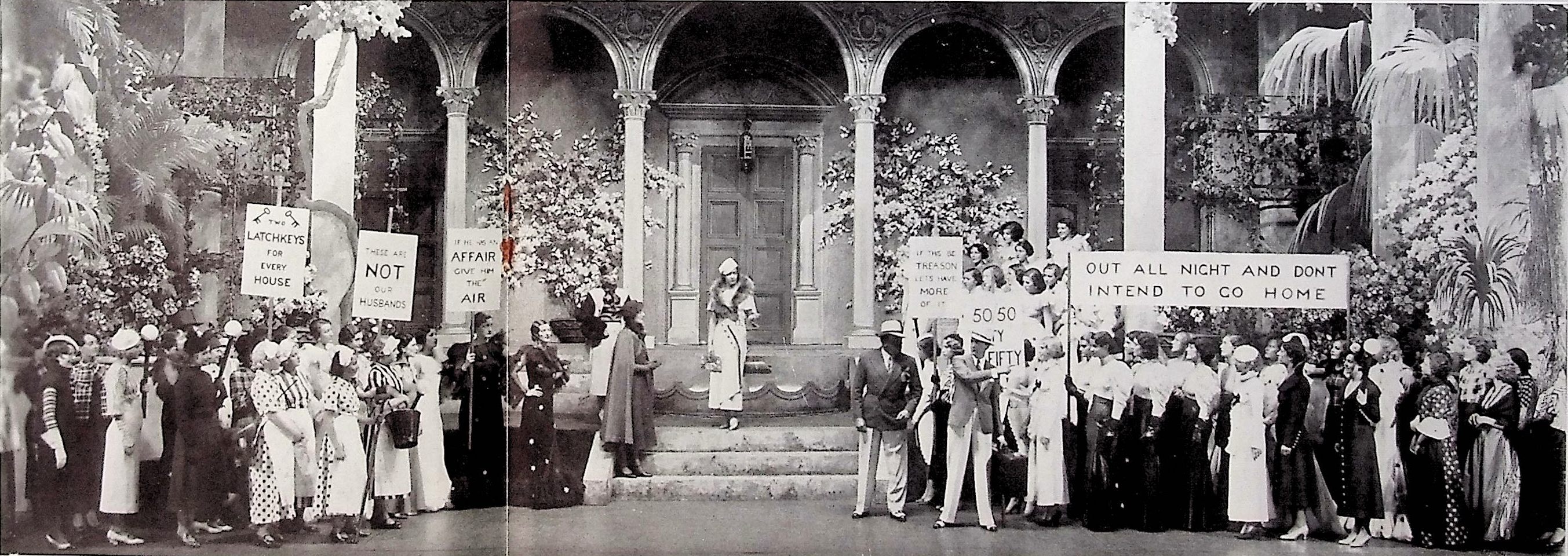
Admirers of the Marquise’s actions gather in from of her house in support in act 3 of “Ball at the Savoy.” (Photo: Thomas Krebs Archive)
In this instance we have in “Ball at the Savoy,” a feast for the eye, a wonderful display of dresses, of beautiful choristers and dancers, of allurement for the ear and the senses, which appeal so vividly to the seeker of amusement in the restless metropolis.
All and everything are there at Drury Lane, in the Ball at the Nicois Savoy.
A copy of The Play Pictorial was made available to the Operetta Research Center by Thomas Krebs, the recordings from London are from the Richard C. Norton archive in New York. They still await release as a cast album on CD.

Thank you for this do much!
Ferenc, Rosy Bársony’s stepson
Rather late in the day, but anyone in the South West corner of England (or indeed further afield)would be very welcome to come to my talk to the Torbay Recorded Music Society on Paul Abraham this Friday 17 March 2023 at 14.30. It will be held at St Matthias Church Hall, Babbacombe Road, Torquay TQ1 1HW.
Thank you so much. Joan Marion was my Grandmother. She absolutely loved this show!